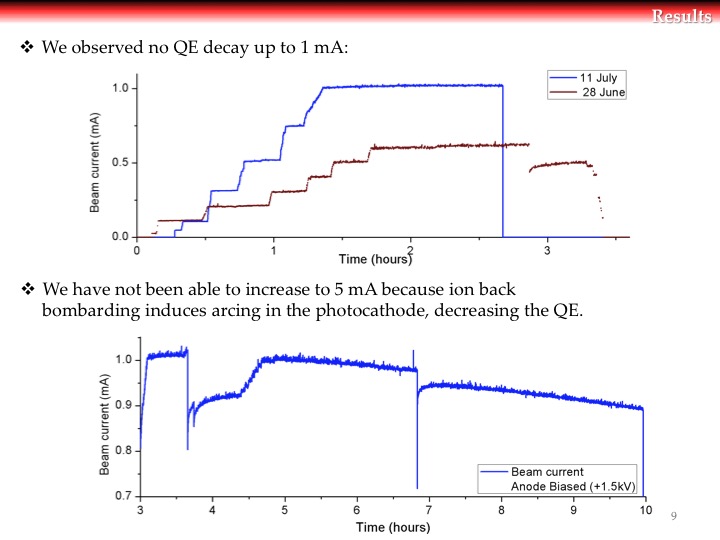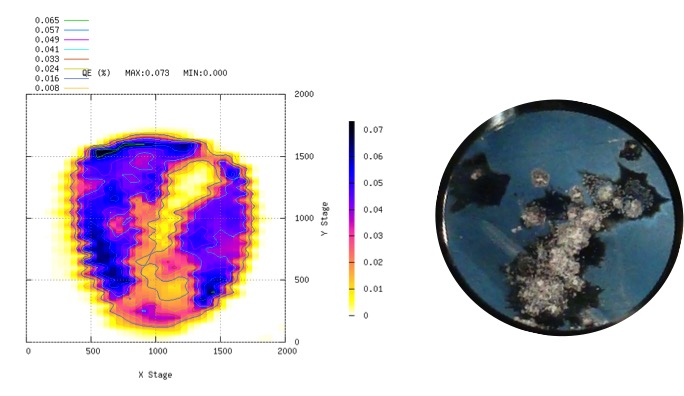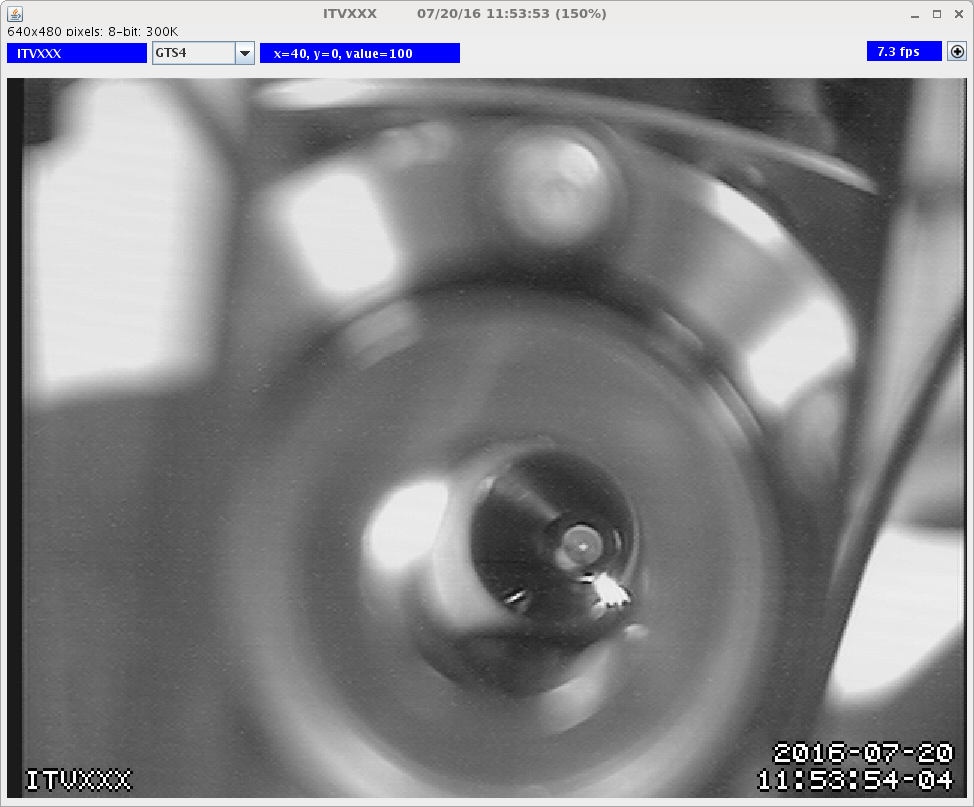GTS meeting 7 25 16
Jump to navigation
Jump to search
The printable version is no longer supported and may have rendering errors. Please update your browser bookmarks and please use the default browser print function instead.
- 1 mA semi-stable running for nearly 7 hours: [1]
- At 300kV, with anode bias at +1500 V, and
- Better beam focusing and centering in the viewers, rather than on the solenoids.
- We think is the latter that made the greatest contribution to high current beam
- Even so, we still see sudden "photocathode-anode arcing" that reduces the QE on the illuminated area, but only slightly

- By moving a hand-held magnet around the gun chamber, "something changed" and now there is field emission starting at around 230kV.
- This induced several gun HV trips (on current) while attempting to operate at 300kV.
- We tried Kr processing at no avail. We are then operating at 225kV.
- The QE scanner is operational!
- The key to make it work was to bias the gun at -1kV, using the Glassman HVPS, and the anode grounded through the Keithley pico-ammeter that reads in EPICS. YEs, for this we need to lock the GTS enclosure in Run mode.
- The following scan was taken after doing Kr processing. This is why the QE in the un-damaged area is smaller than 2.5%.



